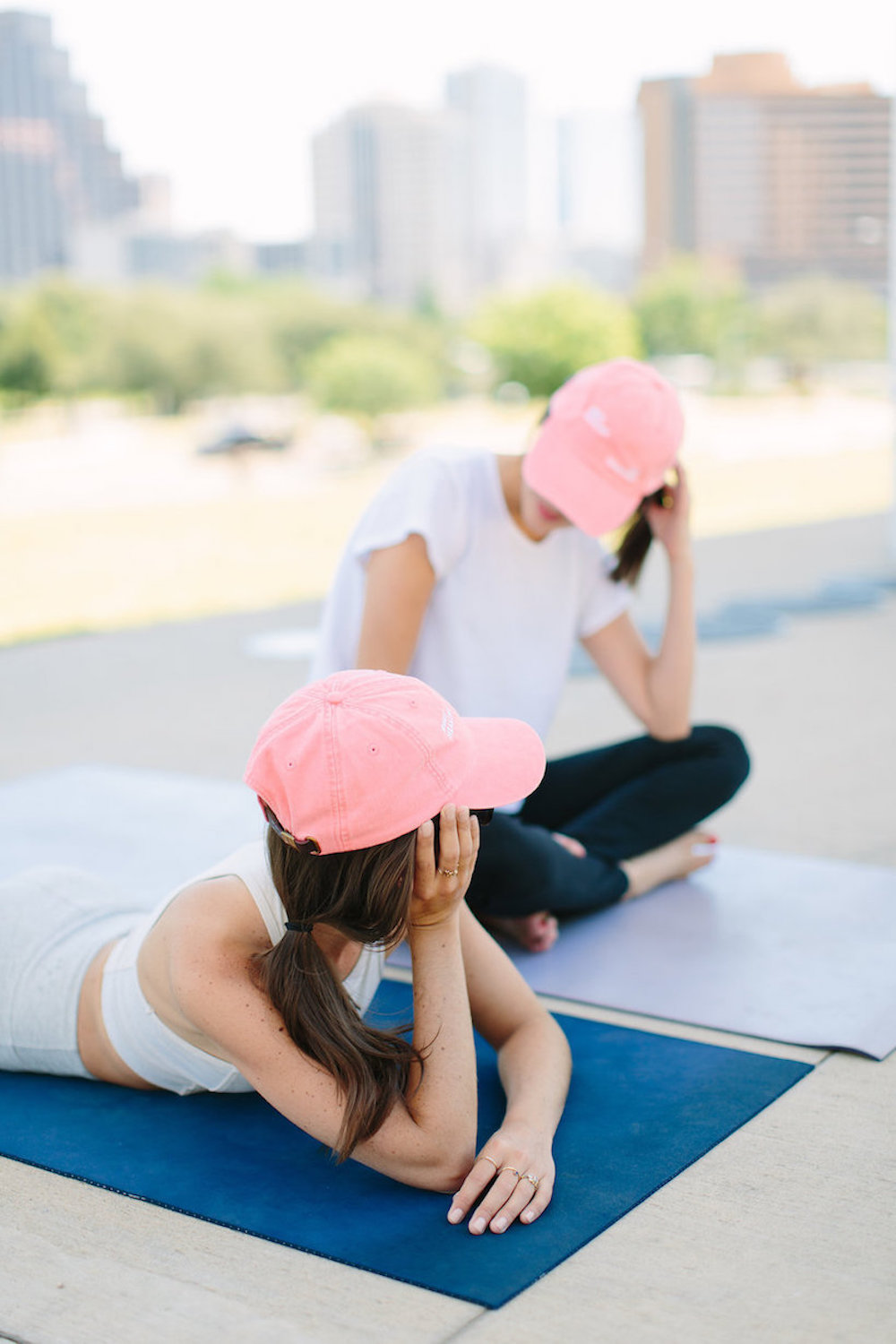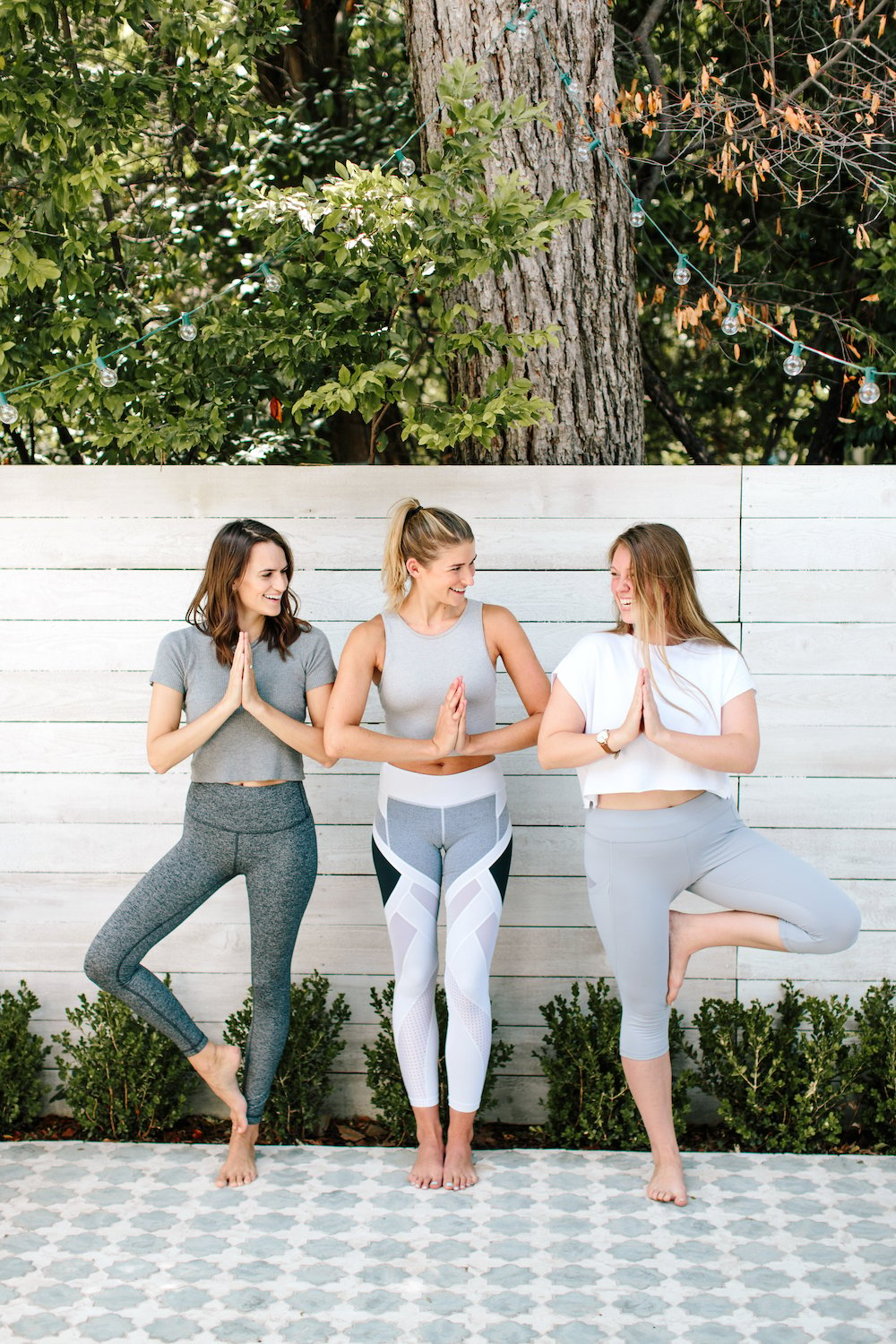As an avid yogi myself, just saying the word “yoga” makes me feel peaceful – it might sound crazy but I think it has something to do with the brain-body connection that’s been hardwired into my practice.
The peace from anxiety and overthinking, and the relief from old injuries and pain I’ve found within a regular yoga practice over the last 15 years has changed the way I move through the world from day to day.
These experiences are in no way unique to me: many people have found the power of yoga practice (asana) and breath work (pranayama) healing – and the coolest part is that it’s been studied and scientifically proven time and again to be powerfully effective for both your brain and your body. Mistakenly, this ancient practice of the mind, body, and breath is often considered in the mainstream as “a form of exercise,” or perhaps another common misconception is that yoga is “just stretching.” However, spend 5 minutes talking to any enthusiastic yogi and you’ll surely get an earful about how yoga practice includes exercise and stretching for sure, but it also about the well-researched ability to make positive long term changes to not just your body – but interestingly – your brain too. Let’s swan dive right into the science behind why regularly practicing yoga can spark healing and positive changes in the human brain.

The Obvious: Yoga does wonders for your bod.
Many people hear the word yogi and picture a hyper-flexible-person with their body in a pretzel shape; maybe a foot close-by an ear, leg over a shoulder and questionably angled arm wrapped in a way that looks both painful and impossible. While yes, advanced poses are admired by many yogis, you might be happy to hear that pretzel poses aren’t exclusive to where the juicy goodness of yoga comes in! Many of the benefits of yoga such as basic increased flexibility or loosening of muscles and connective tissues around bones and joints come into play from just participating in basic practice. You don’t have to go wild to get it goin on! Beginner to intermediate level practice will help build strength, increase flexibility and balance – and has been proven to decrease rates of arthritis, chronic pain, carpal tunnel, back pain, and increase blood flow to the heart (amongst many other positive associations). Moving your joints through their entire range of motion on a regular basis not only feels great but also helps prevent degeneration and stiffness.
Consider yoga an anti-aging recipe for your muscles, bones, and joints. To keep them healthy, it helps to keep them movin’!
These physical effects only skim the surface, because this article is about your brain and yoga – however in holistic medicine we look at the body as a whole. When your whole body is happy – your brain is happy too! Less pain in your body translates to less mental health diagnoses, headache disorders and a general calmer state of wellbeing. Because lets face it – no one wants to feel creaky.
The Less Obvious: Yoga Has a Positive Impact On Brain Health.
The most current research studies on yoga and its connections to brain health have revealed the positive long term changes that occur in your brain with regular practice as noted by MRI and close monitoring of brain activity. One of the highlights of this research is the effect that yoga has on increasing gray matter density. How exciting! I know, I know…that actually doesn’t sound so exciting until you understand what it means. Gray matter which takes up about 40% of your brain, consists of your brain’s cells (or neurons) and PS it’s actually pink not gray (ignore that confusing detail). This gray (pink) matter in your brain is responsible for many high level functions such as memory, self awareness, learning, control of your five senses, and muscle control.
The reason that we care about increasing gray matter is that essentially the more gray matter you have in certain parts of your brain – the better those areas perform.
Also if you didn’t know – each part of your brain is responsible for different actions, reactions and processes. So let’s bring it back home….increasing gray matter = better brain function in that specific area, wherever you get more gray matter- the better that part of the brain works. What we’ve learned is that yoga increased gray matter density in the hippocampus and prefrontal cortex. When these areas of your brain perform better, you then have better:
- Emotional and impulse control
- Focus and concentration
- Decision making
- Self Control
- Better evaluation of rewards and consequences
Sweet! All important and beneficial mental benefits while also enjoying a feel good physical practice – this is where I make a joke about literal and figurative growth. Start growing your grey/pink brain matter my friends.
Yoga Decreases Feelings of Stress and Anxiety
Anxiety: If you have anxiety, you know – the tricky part is that you spend a lot of time worrying about things you can’t control. It’s a terrible feeling and it’s 100% unproductive! You can’t change what you can’t control right? A pillar of yoga that you can take off the mat to everyday life to majorly combat anxiety is staying present. No this is not just a thing hippies say. This is actually especially helpful for individuals with anxiety.
The more present – or “in the moment” you are – the less time you have to worry about things you can’t control.
It’s not as simple as just telling yourself to “stay present” either – despite what many people believe – it doesn’t actually work just like that when it comes to your brain. In yoga you are actually training your brain to get better at “riding the wave” when things are hard or stressful (I.E. during situations that normally would make you very anxious, you just float through rather than capsize and sink) Picture this: When you have to breathe through that hard pose in your yoga class to get through without falling over – and you learn to actually get good at breathing through that hard pose – practice after practice – week after week – you begin to activate and strengthen the part of your brain that replaces anxiety or inability to cope – with rational thought. You strengthen the neural pathways that your brain needs to stop your boat from rocking in the crazy ocean of life and have an easier time sailing through. Sail on matey! The fact that yoga can retrain your brain is pretty amazing.
Stress: One of the very cool things about the benefits of yoga and the brain is that there isn’t just one, it’s so multifactorial. Let’s talk about the link between yoga and how it destroys stress. We all know by know – this world is full of way too much stimulation and higher levels of stress than we as humans were perhaps ever designed to handle! We also know the long term side effects of untamed stress are ugly (think inflammation, digestion, headache, muscle tension and more! eep!) With all of this knowledge – finding a regular practice proven to cut stress is never a bad idea. This article from Harvard Health discusses how perceived relaxation (that ahhhh feeling you get during yoga) in turn causes physiologic (or body response) relaxation thus reducing your heart rate, blood pressure and respiratory rate.
Over time continuing to bring your heart rate, blood pressure and respiratory rate down – as relaxation does – you begin to reap the benefits and counter the 90 thousand dings, notifications, baby cries, and micro-stressors we encounter every day.
Finding the time is worth it!

Yoga. Makes You Calm and Happy, and Decreases Depression
The combination of breath-work, postures and movement in yoga – which stimulates what is often referred to as the “mind-body connection” – is like a little happy pill for your brain every time you perform them together.
This awesome calm combo inhibits a part of your brain known as the hypothalamus from acting in an overreactive manner- this inhibition optimizes your body’s response to stressful stimuli. Additionally the areas in your brain that are responsible for fear, aggression and rage are all inhibited (umm always a good thing no?) While the pleasure center and other areas in your brain responsible for bliss (think big ol’ releases of the hormones dopamine, oxytocin, serotonin, and endorphins yassss!) get turned on. Again these responses lead to lowered heart rate, blood pressure and respiratory rate – giving your heart and body a nice big rest from the work it does all day. The infusion of the positive hormones as mentioned above are the same “happy hormones” that can help battle depression.
If you’re looking for a natural alternative to prozac, zoloft or other SSRI type antidepressant medications – yoga is a great place to start. Psst – don’t ever quit mental health meds without the guidance of the doctor or psych provider – it’s not something to play around with on your own. That said, it’s more than reasonable to bring it up with your provider and see what they think about trialing daily or multi-weekly yoga and mindfulness if you’re already on an antidepressant OR a great tool to use if you’re not yet on meds but feel like you might need some help getting your groove back.
How to start your own practice
Make it a habit: For both beginner and experienced yogis, in order to reap regular benefits on the mind body connection offered in yoga, integrating a regular practice is important. Grab your mat and think about wiggling some time in at least once a week to start. If you’re feeling great and loving the practice you honestly will likely find more time as you advance ! It takes time to build a habit though so don’t give up and be sure to hold yourself accountable (ie keep showing up) because your body and brain will thank you – not just now – but forever!
Check out:
- Youtube has amazing yoga teachers with access to free classes, often with the option to donate.
- Donation based yoga! Such a great concept – donate what you can afford – this is a great way to dip your toes in and see how you do without getting stuck in a membership! My favorite donation based studio is Black Swan Yoga.
- Paid Apps like Yoga Flow and Down Dog are also AMAZING! They let you pick your favorite teachers on the app, personalize programs according to target area, length, style etc. You can also create programs with reminders to get on a workout schedule.
- When coronavirus is over, go support your local studio. They could probably use the support by now and for me – nothing beats the power and energy of an in person class moving in time together with hands on adjustments from teachers – even the smells of other sweaty students. Can you tell I’m really missing my studio right now?
Good luck! Don’t be scared to jump into something new if you’ve never tried yoga before. And if you’re an old pro or even just an old regular, think about digging into your breath and regularity next class… now you know what’s happening beneath all of those chaturangas. Namaste ya’ll!









